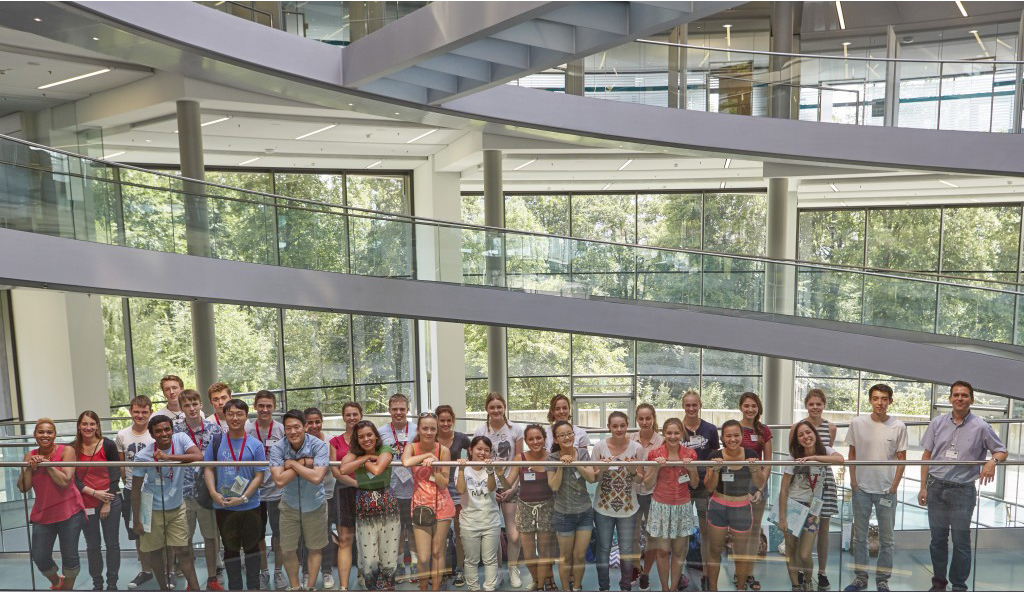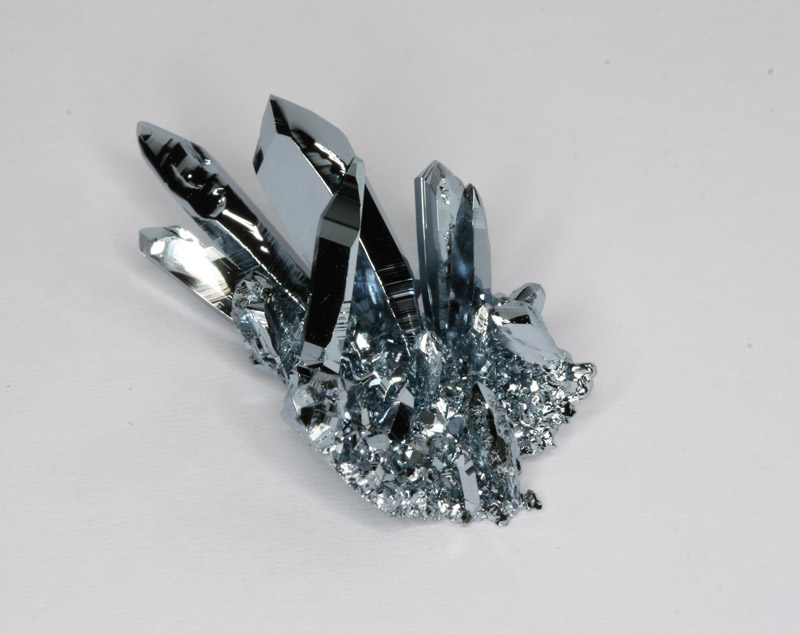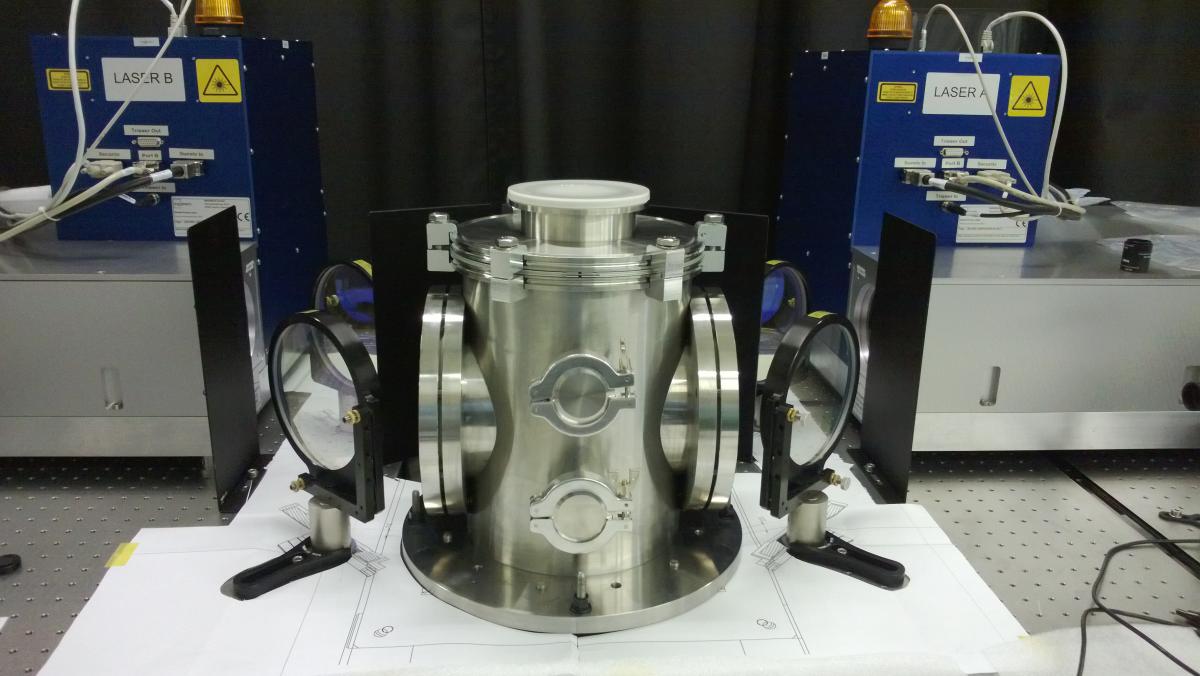Space, student visits and new science Understand article
Science in School is published by EIROforum, a collaboration between eight of Europe’s largest intergovernmental scientific research organisations (EIROs). This article reviews some of the latest news from EIROs.
CERN
S’Cool LAB opens its doors
Innovation at CERN
Image courtesy of Maximilien
Brice / CERN
The first S’Cool LAB workshops of this academic year have now begun, giving students the opportunity to get hands-on with experiments at the European Organization for Nuclear Research (CERN). The one-day programme offers school students aged 16 to 19 an introductory talk and two visits to CERN’s research facilities in the morning, and a workshop with hands-on experiments in the afternoon. To make the most of their time, students also prepare for their visit using an e-learning platform.
During the event, students are guided by scientists and engineers at CERN. The students work in small groups on two to three different experiments, each of which lasts about 1–1.5 hours. The exact programme of the workshop depends on the size of the group and their level of preparation, among other factors, and can be discussed between their teacher and the S’Cool LAB team.
Applications for the next round of workshops will be announced soon, so keep an eye on the S’Cool LAB newsletter or subscribe to their e-mail updates online.
Based in Geneva, Switzerland, CERN is the world’s largest particle physics laboratory.
For a list of CERN-related articles in Science in School, see: www.scienceinschool.org/cern
EMBL
Twenty years of welcoming international summer students
This summer, the European Molecular Biology Laboratory (EMBL) again welcomed students taking part in the International Summer Science School Heidelberg (ISH). Now in its 20th year, ISH brought together talented students from four continents to gain exclusive insights into a variety of research areas. During their research internships, the students from Heidelberg’s sister cities Cambridge (UK), Kumamoto (Japan), Montpellier (France), Rehovot (Israel) and Simferopol (Crimean peninsula) – as well as students from the USA and Australia – received individual practical training, heard scientific lectures and explored the Heidelberg area.

Image courtesy of EMBL
The European Learning Laboratory for the Life Sciences (ELLS) team at EMBL immensely enjoyed interacting with the students during the introductory workshop for all participants, in which students analysed fluorescent proteins – experimentally in the training labs and with bioinformatics tools in the computer lab. Two students then stayed on in the EMBL chemical biology core facility for three-week internships.
EMBL is Europe’s leading laboratory for basic research in molecular biology, with its headquarters in Heidelberg, Germany.
For a list of EMBL-related articles in Science in School, see: www.scienceinschool.org/embl
ESA
A space-filled Christmas lecture
An annual tradition for many children and their parents in the UK, the Royal Institution’s Christmas lectures are broadcast during the festive period and explore a different theme each year. The plans for this year’s series by Kevin Fong, an expert in space medicine, will hopefully include a live video chat with the European Space Agency (ESA)’s astronaut Tim Peake on the International Space Station (ISS).
The Christmas lectures began in 1825 when Michael Faraday organised the first series, on natural philosophy. Faraday established the lectures to bring science to a young audience through some of the best minds of the times, and they have taken place every year since, save for a break between 1939 and 1942. Dr Fong is a British medical doctor who also has a degree in astronautics and space engineering, and he has helped develop medical procedures for use in space. He will deliver three lectures on ‘How to survive in space’ and hopes to link up with Tim Peake, who is set to arrive at the ISS for the start of his mission, Principia, days before the lectures begin.

Image courtesy of Paul Wilkinson
Find out more about the Christmas lectures, past, present and future, and how to watch them, at:
Read more about Tim Peake and his mission or follow him on Twitter at @astro_timpeake
ESA is Europe’s gateway to space, with its headquarters in Paris, France.
For a list of ESA-related articles in Science in School, see: www.scienceinschool.org/esa
ESO
ESO calendar 2016

(LCO) / ESO
If you don’t yet have a 2016 calendar for your classroom wall, the ESO calendar is now available to order online.
The calendar’s cover features a spectacular picture of the European Southern Observatory (ESO)’s Very Large Telescope observing the region around the supermassive black hole at the Milky Way’s centre. The calendar itself is packed with images of the cosmos as well as photographs of ESO telescopes in the rugged landscapes of northern Chile.
To buy the calendar, visit the shop.
Individual pages of the ESO calendar 2016 can be viewed online.
ESO is the world’s most productive ground-based astronomical observatory, with its headquarters in Garching, near Munich in Germany, and its telescopes in Chile.
For a list of ESO-related articles in Science in School, see: www.scienceinschool.org/eso
ESRF
Record high pressure squeezes secrets out of osmium

grown by chemical vapour
transport
Image courtesy of
www.periodictable.ru, CC BY
The metal osmium is one of the most exceptional chemical elements, with the highest known density of all elements at ambient pressure. Researchers at the European Synchrotron Radiation Facility (ESRF) have now investigated the behaviour of this metal at pressures of up to 770 Gigapascals, the highest static pressure ever achieved in a lab. Surprisingly, osmium does not change its crystal structure even at the highest pressures, but the core electrons of the atoms come so close to each other that they can interact – contrary to what is usually taught in chemistry. This fundamental result, published in the journal Nature, has important implications for understanding physics and chemistry of highly compressed matter, for the design of materials to be used at extreme conditions, and for modelling the interiors of giant planets and stars.
For the full story, read the ESRF news article.
Or read the research paper:
Dubrovinski L et al (2015) The most incompressible metal osmium at static pressures above 750 gigapascals. Nature 525: 226–229. doi: 10.1038/nature14681
Situated in Grenoble, France, ESRF operates the most powerful synchrotron radiation source in Europe.
For a list of ESRF-related articles in Science in School, see: www.scienceinschool.org/esrf
Eurofusion
Runaway electrons? Not so fast

Imagine the chaos in a room full of toys and energetic toddlers – there would be a lot of running around and bumping into each other. Something similar happens in a fusion experiment. When gas is heated to about 100 million degrees Celsius, the negatively charged electrons are freed from their associated nuclei, leaving them behind as positively charged ions. This mixture of hot electrons and positive ions, known as plasma, moves in random directions and its constituents collide with each other.
These collisions are exactly what scientists need for a successful fusion experiment. When two positive ions collide, they can fuse to form heavier nuclei, releasing energy. But what happens to the electrons? Usually they just move around harmlessly and collide with each other and other particles, but some become what are known as runaway electrons, moving faster and faster, almost reaching the speed of light. If these fast-moving runaway electrons collide with the walls of the fusion experiment vessel, they can damage the vessel – something that scientists want to avoid.
To be ready to deal with these runaway electrons, scientists deliberately created runaway electrons in the medium-sized reactor at the Max Planck Institute for Plasma Physics in Garching, Germany. They triggered the runaway electrons and then prevented them from damaging the vessel wall by flooding their paths with noble gases such as argon and neon. Instead of colliding with the vessel wall, the electrons were slowed down. Now if scientists encounter electrons that run away, they know how to slow them down and prevent damage to a fusion vessel.
To learn more, read the story in EUROfusion’s August issue of Fusion in Europe.
To read more about how a tokamak reactor works, see:
Rüth C (2012) Harnessing the power of the Sun: fusion reactors. Science in School 22: 42-48.
Interested in getting a tour of the facilities at the Max Planck Institute for Plasma Physics in Garching? Check out the details.
EUROfusion comprises 28 European member states as well as Switzerland and manages fusion research activities on behalf of Euratom. The aim is to realise fusion electricity by 2050.
For a list of EUROfusion articles in Science in School, see www.scienceinschool.org/EUROfusion
European XFEL
A high-powered laser for making other-worldly conditions

Dipole laser
Image courtesy of STFC /
Central Laser Facility
The European X-ray Free Electron Laser (European XFEL) will be able to generate ultrabright X-rays that last only quadrillionths of a second, but it won’t be the only incredible laser in the facility. The High Energy Density Science instrument, which will be used to research extreme states of matter, will use a special laser, Dipole, to create conditions similar to those found in the cores of planets inside and outside our Solar System.
Contributed by the Science and Technology Facilities Council in the UK through an international user consortium, the Dipole optical laser is designed to quickly provide a large amount of energy (ten 100-joule pulses per second, meaning each pulse has enough energy to lift a kilogram weight 10 metres high). That kind of energy, delivered in pulses lasting only nanoseconds, can compress matter in a way that generates energy-dense plasma for just long enough for the X-rays from European XFEL to interact with it. Scientists can then analyse the resulting data and learn about matter deep within other planets without ever leaving Earth.
European XFEL is a research facility currently under construction in the Hamburg area in Germany. Its extremely intense X-ray flashes will be used by researchers from all over the world.
For a list of European XFEL-related articles in Science in School, see: www.scienceinschool.org/xfel
ILL
Delving into superconductivity with polarised neutrons
Image courtesy of Julien Bobroff
and Frederic Bouquet
Superconductivity is when electricity flows with no resistance and no energy loss. High-temperature superconductors can show superconductivity up to around 130 K. But even after 30 years of extensive research, understanding how materials become superconductors remains one of the single most important challenges. Researchers at the Institut Laue-Langevin (ILL) might now have found some answers.
There is a general consensus that the key to unravelling superconductivity may lie in what happens just before a material becomes superconducting, known as the pseudo-gap phase. In this phase, a material has a partial energy gap – it is conducting in some places but not in others. One possible explanation for this behaviour has been that the unit cells of the material, the repeating units that make up the structure, may contain small loop currents. As we know, electrical currents generate magnetic fields, but checking for such magnetic fields in this instance is difficult because the fields in question are tiny. Such fields, however, can be measured using neutrons.
Magnetic moments within the pseudo-gap phase of high-temperature superconductors have been detected, but questions remained. Researchers from ILL and the Laboratoire Léon Brillouin, in Gif-sur-Yvette, France, used polarised neutron diffraction to measure the magnetic signals in a high-temperature superconductor. They determined the magnitude and direction of these tiny magnetic moments and the extent to which they are correlated in space, and all as a function of temperature. These results form a set of conditions to describe the physics of the pseudo-gap phase and provide a better description of the postulated loop currents.
ILL is an international research centre at the leading edge of neutron science and technology.
For a list of ILL-related articles in Science in School, see: www.scienceinschool.org/ill






